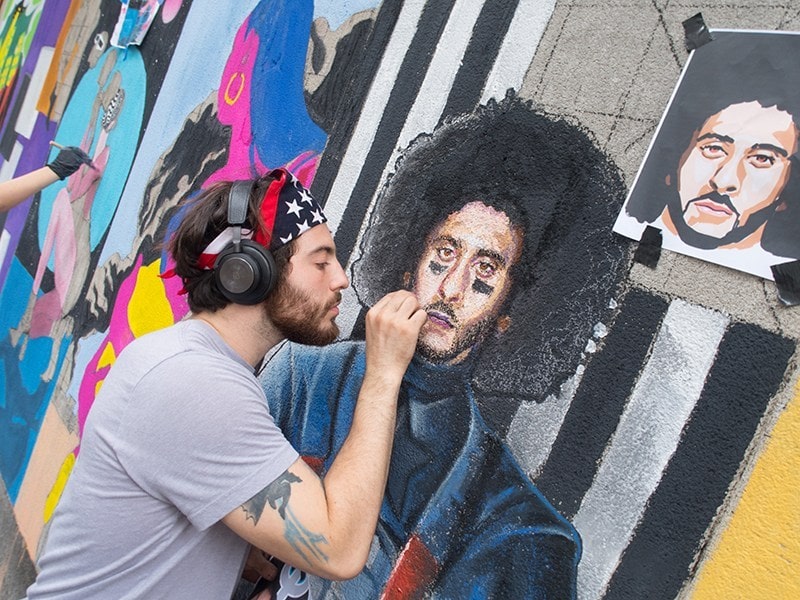I think it’s better to die standing than to live on your knees, or if everything was really for everyone maybe you would feel another air and not another false peace, are some of the phrases that we can find on the streets with very different styles but all of them are considered as urban art Do you want to know all the peculiarities of this type of works known as street art?
Street art, a new creative expression in the street
Street art, refers to all the art that is made in the street, that is to say, in the public thoroughfare. It is normally considered as a type of artistic expression outside the law and therefore it is a type of art that gives rise to controversy and confrontation between its followers and its detractors.
The concept of urban or street art is a translation of the English expression Street Art that is currently used to describe urban artistic expressions, in public places. From here come all kinds of art styles in the city. For example, there are also movements like street photography where photographers portray ordinary people with a particular look or face.
This form of art in public places is born by the artist himself, without previous permission or commission. When the work is finished, it is abandoned by the same person who created it but it lasts for the rest of the passers-by.
The style of urban art
The urbanist movement began with Graffiti, being this the first artistic expression associated with the streets. However, there are other forms of artistic expression such as posters or stickers.
Their objective is to try to surprise the observers, trying to do it in very busy areas to create a greater impact. That’s why many artists try to do it even in the subway. Another characteristic is that all the works tend to express reactions against the established system.
Hence the use of a very striking message, of a revolutionary nature. It is a tool to criticize society, especially ironically, and it tries to incite a social struggle. Although there are messages of all kinds and conditions, some only express a political complaint or criticism or a simple reflection.
Unfortunately, this type of art coexists with debates about the main objective that artists have to make their works, and more so now than many of them simply harm the private space.
First expressions of street art
The street art takes its first steps in the Paris of the sixties where the inscriptions with political messages began. But these expressions took on real relevance in the 1990s, when the concept of Street Art appeared, describing the work of a heterogeneous and diverse group of artists who developed their art on the street.
In the nineties different techniques of street expression were developed, such as: stickers, murals, stencils, posters… and all these techniques are very far from graffiti. The world of urban art has followed a great evolution, nowadays you can see very professional works in 3D.

The styles and techniques used in street art
We could say that street art is a manifestation of oppression or marginalization and possibly damages private property.
Graffiti:
The term comes from graffiti which refers to “words written on the wall” and its use makes sense since in the 60’s graffiti consisted of signatures left by teenagers in the most populated neighborhoods of American cities. In this first stage there was not much technique and the aerosol was used as a tool. The artists competed among themselves to achieve the most original and personalized signature in the city, giving in a short time to signatures that were more and more stylized, with many colors and of great size.
Today this art form is widespread throughout the world under an invisible and closed code of rules developed throughout the 70’s. The classification of the different styles is measured according to the importance and mood:
- the number of times they appear in the city;
- the risk involved in accessing the premises where the painting was done and
- your own style.
Postgraffiti:
After the success of the urban style marked by a strong revolutionary and transgressive current, postgraffiti appears. This movement tries to ensure that there is no competition between artists while promoting respect for civic norms.
Therefore, neutral, abandoned spaces that are not architectural heritage or private property are sought for their execution. Postgraffiti uses diverse materials that are less aggressive. For example: paper, posters, stickers and templates, so the artist can afford a quick execution. In this style, the most revolutionary roll is left aside and takes some aspects of graffiti to the limit.

